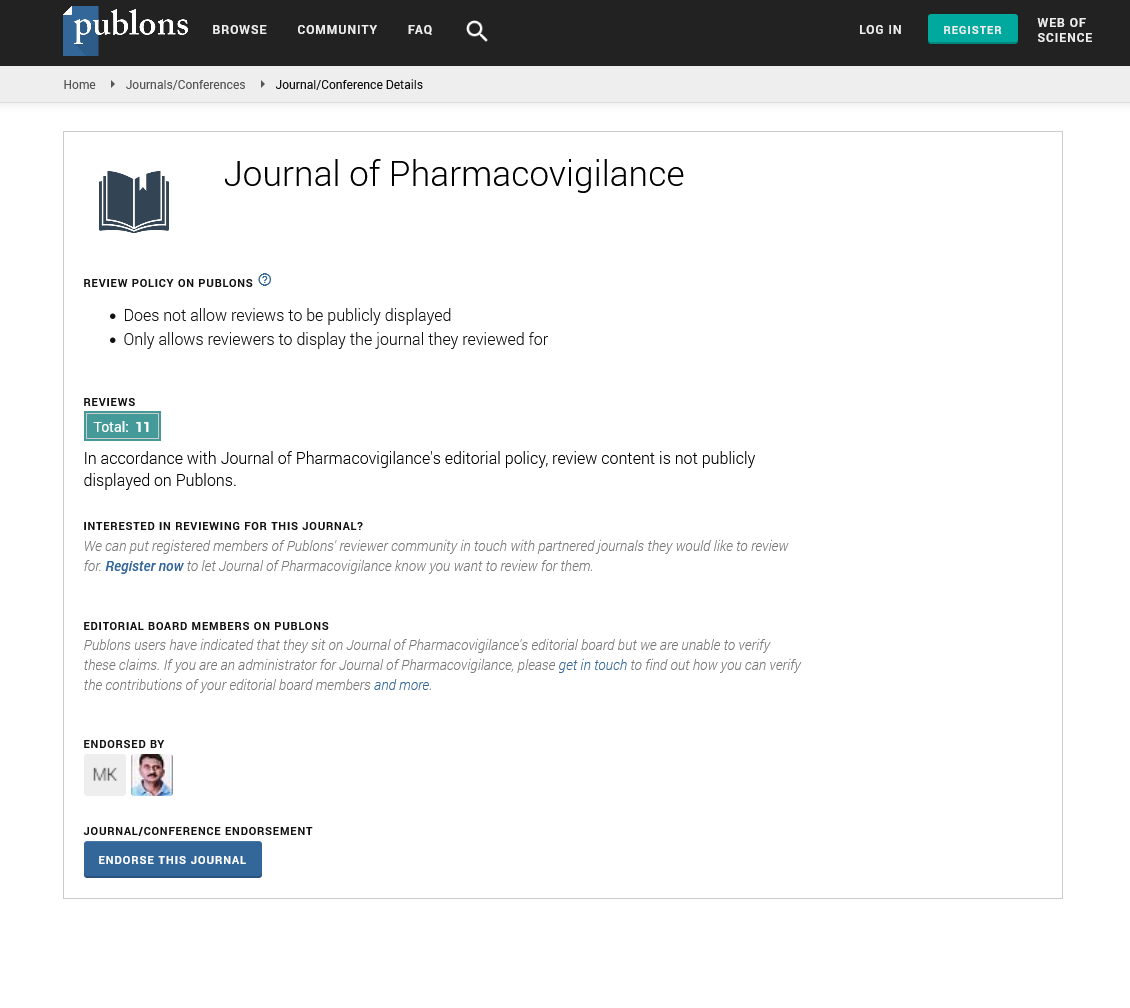Indexed In
- Open J Gate
- JournalTOCs
- The Global Impact Factor (GIF)
- RefSeek
- Hamdard University
- EBSCO A-Z
- OCLC- WorldCat
- Publons
- Euro Pub
- Google Scholar
Useful Links
Share This Page
Journal Flyer

Open Access Journals
- Agri and Aquaculture
- Biochemistry
- Bioinformatics & Systems Biology
- Business & Management
- Chemistry
- Clinical Sciences
- Engineering
- Food & Nutrition
- General Science
- Genetics & Molecular Biology
- Immunology & Microbiology
- Medical Sciences
- Neuroscience & Psychology
- Nursing & Health Care
- Pharmaceutical Sciences
Commentary - (2022) Volume 10, Issue 2
Note on Pharmacoepidemiology and Pharmacokinetics
Zakir Karatas*Received: 17-Jan-2022, Manuscript No. JP -22-355; Editor assigned: 20-Jan-2022, Pre QC No. JP -22-355(PQ); Reviewed: 03-Feb-2022, QC No. JP -22-355; Revised: 07-Feb-2022, Manuscript No. JP -22-355(R); Published: 14-Feb-2022, DOI: 10.35248/2329-6887.22.2.355
About the Study
Pharmacoepidemiology
Pharmacoepidemiology is a study of drug use and efficacy in a well-defined population. To carry out this study, pharmacological epidemiology utilizes both pharmacology and epidemiology. Therefore, pharmacological epidemiology is a bridge between pharmacology and epidemiology. Pharmacology is the study of the effects of drugs and clinical pharmacology is the study of the effects of drugs on clinical people. One of the tasks of clinical pharmacology is to develop a benefit risk assessment of the effect of a drug on a patient. Conduct the necessary research to obtain estimates of the potential for beneficial impacts on the population or assess the potential for adverse effects on the population. Other parameters related to substance use may be useful for epidemiological methodologies. Pharmacological epidemiology can also be defined as a transparent application of epidemiological methods through the pharmacological treatment of the disease in order to better understand the disease being treated. Epidemiology can be defined as the study of disease epidemics and determinants in a population. Epidemiological studies can be divided into two main types.
1. Descriptive epidemiology may consist of rate calculations that describe the disease and exposure, Incidence and prevalence. Such descriptive studies do not use controls, can only generate hypotheses and cannot test them. Research on substance use is generally categorized as descriptive research. Analytical epidemiology includes two types of studies, observational studies such as case-control studies and cohort studies and experimental studies including clinical studies such as randomized clinical trials. Analytical studies compare exposure and control groups and are usually designed as hypothesis testing studies. Pharmacology has benefited from the methodologies developed in general epidemiology and can be further developed for this. There are also some areas that are completely unique to pharmacological epidemiology.
2. Pharmacovigilance is a form of continuous monitoring of side effects and other safety-related aspects of drugs already on the market. In fact, pharmacovigilance is in most cases, a voluntary reporting system that allows healthcare professionals and others to report the side effects of a drug at a central point. Central authorities combine reports from many sources to create a more meaningful safety profile for medicines than possible based on one or a few reports from one or several healthcare professionals.
Pharmacokinetics
Pharmacokinetics sometimes abbreviated as PK, determines the rate of substances administered to living organisms. It is a field of pharmacokinetics devoted to target substances include all chemical foreign substances such as pharmaceuticals, pesticides, food additives and cosmetics. It analyzes chemical metabolism and seeks to discover the fate of chemicals from the moment they are administered until they are completely excreted from the body. Pharmacokinetics studies how an organism affects a drug and pharmacodynamics studies how a drug affects an organism. Both together affect dosage, benefits and side effects as seen in the PK/PD model. Pharmacokinetics is how the body releases certain xenobiotic/chemicals after administration through absorption and distribution mechanisms and metabolic changes in substances in the body. Explain whether it is used for, and the effect is the excretion route of drug metabolites. The pharmacokinetic properties of the chemicals are affected by the route of administration and the dose of the drug administered. These can affect absorption. It may be useful to monitor this concentration, as the effect of the drug often depends on the concentration at the site of action. Direct measurement of drug levels at these sites is not practical because drug receptor sites are generally inaccessible to our observations or widely distributed throughout the body. For example, the receptor site for digoxin is thought to be in the myocardium. Obviously, it is not possible to directly measure the drug concentration in this tissue. However, it is possible to measure drug concentrations in blood, plasma, urine, saliva and other easily sampled liquids. Kinetic homogeneity represents a predictable relationship between the concentration of a drug in plasma and the concentration at the receptor site where a given drug exerts its therapeutic effect changes in plasma drug levels reflect changes in drug levels at receptor sites and other tissues. As the con centration of drug in plasma increases, the concentration of drug in most tissues will increase proportionally. Similarly, if the plasma concentration of a drug is decreasing, the concentration in tissues will also decrease.
Citation: Karatas Z (2022) Note on Pharmacoepidemiology and Pharmacokinetics. J Pharmacovigil.10:355.
Copyright: © 2022 Karatas Z. This is an open-access article distributed under the terms of the Creative Commons Attribution License, which permits unrestricted use, distribution, and reproduction in any medium, provided the original author and source are credited.

